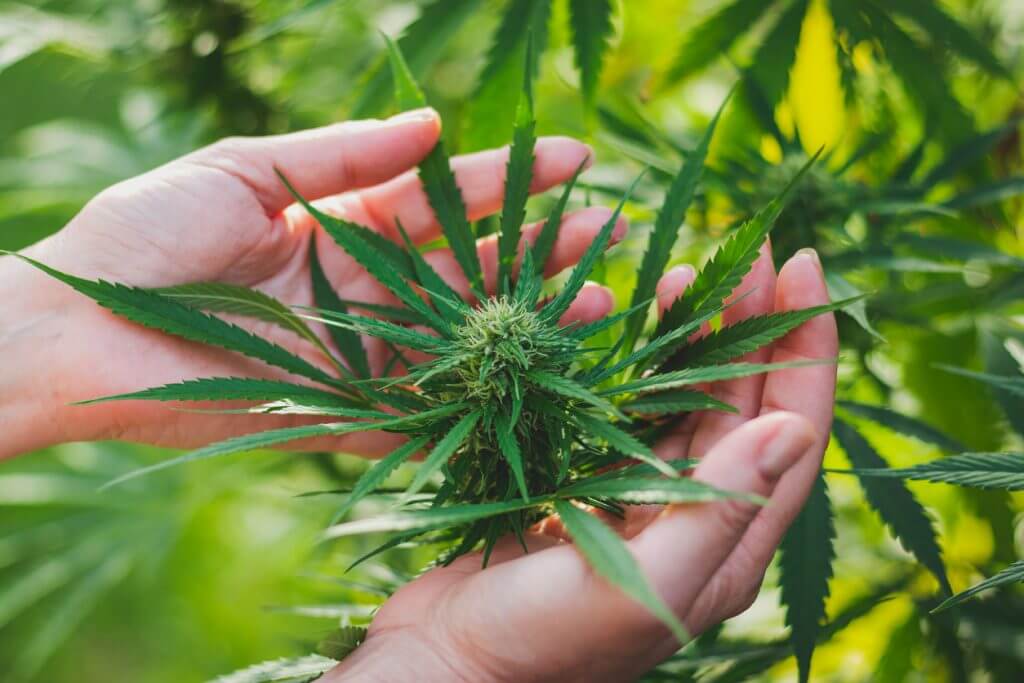Grown in the northern hemisphere, hemp comes from the Cannabis sativa plant species and is in use in a variety of products, including biodegradable plastic, biofuel, paper, textiles, food, clothing, paint, and more. Hemp is known to have over 25,000 possible applications. Although it comes from the same plant species as marijuana, hemp comes from a distinct strain that has lower concentrations of THC and higher concentrations of cannabidiol (CBD). Hemp varies in legality, and some governments have limits on how much THC content plants can have. The following article will help you learn more about this peculiar plant as well as attain a comprehensive answer to the question, “What is a hemp plant?”
Some Legislative History of Hemp
Despite both being a part of the cannabis family, hemp and marijuana are entirely different in their cultivation, application, and function. Although these differences are significant, U.S. political representatives voted to ban all Cannabis species as Schedule I Drugs in 1970 under the Controlled Substances Act. This was a product of Richard Nixon’s famous “War on Drugs” in the 1970s, which also led to the popular misconceptions about hemp that persist today. New legislation has helped dispel misconceptions, but progress has been slow overall, and public discourse on the issue has been virtually non-existent. Hemp products are now legal in the United States, though most ingredients and products are imports from other countries, mostly Canada.
How is Hemp Different From Marijuana?
Cannabis is a classification of plants with a variety of species, including both hemp and marijuana. Hemp can is distinguishable from marijuana with the following criteria.
- Appearance– From just looking at the two plants, it is easy to see that they are quite distinct. Marijuana plants have a bushy appearance with broad leaves and dense buds, while hemp plants have more narrow leaves that are mostly at the top of the plant. Hemp also grows taller, narrower, and with fewer branches at the top of the plant when compared to marijuana plants.
- Chemical composition– Marijuana contains high levels of tetrahydrocannabinol, more familiarly known as THC. THC is the chemical responsible for marijuana’s psychedelic effects. An average bag of marijuana can contain anywhere from 5-30% THC. Hemp has such a low amount of THC; it cannot produce any of the same effects. Thanks to new legislation, this THC content is the primary factor influencing legality. For example, hemp is regulated to only contain a max THC level of 0.3%, rendering it virtually impossible to get high from. Moreover, it contains high amounts of cannabidiol (CBD) that counters THC, making the small amount available largely inactive.
- Cultivation– Hemp plants are grown as close as four inches apart in a variety of different climates, with a growth cycle of 110 to 120 days.
When Did People First Start Cultivating Hemp?
Although it might seem relatively new, archeological evidence suggests that hemp has been around as early as 8,000 BC. Ancient Mesopotamians used it to make cloth and other materials, the same way it is used today. Hemp has played a pivotal role in the advancement of civilized society and human history. In fact, it was used to make the Gutenberg Bible over 600 years ago, and the sails of the English ships that conquered the Spanish Armada. Because it was both so useful and profitable, it was illegal for farmers in England to not grow hemp.
The Founding Fathers of America felt similarly. Thomas Jefferson even said, “Hemp is of first necessity to the wealth and protection of the country.” George Washington also encouraged the cultivation of hemp.
What Can You Use Hemp For?
Learning about the history of hemp might have you wondering what all the hype is for. Hemp is an extremely versatile plant that can be used for a variety of different purposes, including the following.
- Food– You might have come across hemp seeds in your local health food store, as they are incredibly nutritious. Hemp seeds contain hemp oil that is high in unsaturated fatty acids. Hemp milk and hemp protein powder are also healthy, hemp-based products, while hemp leaves can be used in salads.
- Fiber– Hemp fiber is used to make rope, paper, fabrics, and textiles. The English word “canvas” is derived from the word “cannabis.”
- Biofuel– You might have wonhttps://americancannabisconsulting.com/services/solutions/#extraction-infusionctbeta.biz/services/extraction/”>hemp oil?” if you have ever seen this product in relation to fuel. Biodiesel also referred to as “hempoline,” can be derived from hemp oil. Although it takes quite a bit of material to produce a significant amount, biofuel can be used to power engines.
- Building Equipment– Hemp can be used to create “hempcrete,” blocks of concrete-like material to use for building. Wood replacements and biodegradable plastics are also derived from hemp and can be used in manufacturing everything from electronics to cars.
- CBD– Short for cannabidiol, CBD has become an increasingly popular product across the globe. Hemp is the primary source of CBD, which is known to relieve pain, combat anxiety, improve sleep, prevent seizures, and even reduce the risk of diabetes.
What Does the Future Look Like?
From CBD to bio-friendly product alternatives, hemp is already experiencing rapid growth and popularity. As we continue to build public awareness and educate others, the industry can only be expected to skyrocket even more. Sharing what you have learned about hemp and dispelling popular myths is one of the easiest ways that you can be a part of this rapid growth. Moreover, new legislation and regulations make it easier than ever to grow safely and legally. Knowing what hemp has done in the past and how it can be used now, the future of hemp has nhttps://americancannabisconsulting.com/contact-us/g.php2.projectbeta.biz/contact/” target=”_blank” rel=”noopener”>Contact us today if you are interested in our hemp consulting services.
